Blood cleansers are herbs used to detoxify and cleanse the blood of impurities, thereby removing toxins throughout the body and also nourishing the blood.
Herbs for cleansing and purifying the blood can be taken in various forms such as teas, capsules, tinctures and extracts.
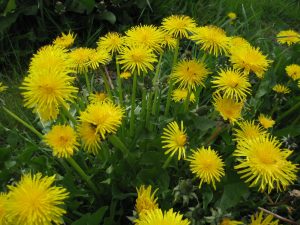
1. Dandelion
How to use it: Make tea with fresh or dried dandelion leaves, flowers or root.
Uses: It is also used as a skin toner, blood tonic, for kidney and liver support, as a digestive tonic, for diabetes, high blood pressure, cancer, constipation, and also balances the beneficial bacteria in the intestines.
2. Burdock Root
How to use: Burdock root is edible and can be used in soups, steamed with vegetables and in general cooking. It can be taken in various forms such as teas, capsules, tinctures and liquid extracts.
Uses: Also used to detoxify the liver, balance hormones, reduce inflammation, improve skin health, aids digestion, cancer, gastrointestinal (GI) complaints and lowers blood pressure.
3. Yellow Dock
How to use: Yellow dock leaves can be used in salads. The stalks and roots can be taken in various forms such as teas, capsules, tinctures and liquid extracts.
Uses: It is also used for respiratory conditions, sexually transmitted diseases (STD), bacterial infections, lymph cleansing, Alzheimer’s, Parkinson’s and menstrual problems.
4. Sarsaparilla
How to use: Sarsaparilla stalk and root can be taken in various forms such as teas, capsules, tinctures and liquid extracts.
Uses: Also used for psoriasis and other skin conditions, rheumatoid arthritis (RA), kidney disease; fluid retention, for increasing sweating, treating leprosy and syphilis.
Sarsaparilla tea
1 to 4 grams Dried Sarsaparilla Root (shredded or chopped)
8 oz Hot Water
Steep the root in the hot for about 10 to 15 minutes. Filter before consuming.
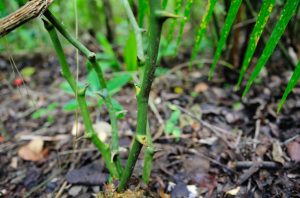
5. Cocolmeca / Green Brier
How to use: The bark is usually used to make a tonic.
Uses: It is also used as an aphrodisiac, for urinary tract support and improving digestion.
6. Red Clover
How To Use: Generally the flowers and leaves are used. It it used to make teas, capsules, tinctures and liquid extracts.
Uses: Also used for improving blood circulation, reducing the possibility of blood clot and arterial plaques, breast health, hot flashes/flushes, PMS, benign prostate hyperplasia (BPH), lowering cholesterol and also helps to prevent osteoporosis.
Red Clover tea
3 – 4 Fresh Blossom
or
1 Tsp Dried Flower (Crushed)
1 Cup Hot Water
Steep for 10 to 15 minutes. Strain and drink.
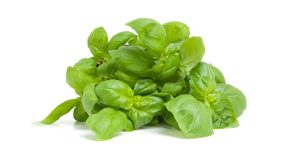
7. Basil
How to use: Add to your soups, salads, pasta or stew. It can also be used to make teas.
Uses: Also used for intestinal gas, kidney conditions, fluid retention, head colds, stomach spasms, loss of appetite and worm infections.
Basil tea
6 – 8 Basil Leaves
1 Cup hot water
Steep for 8 – 10 minutes.

8. Reishi Mushroom
How to use it: Reishi mushroom can be added to soups. It is also available in capsules and liquid extract forms. Consume along with vitamin C rich foods to help with absorption.
Uses: It’s used as an immune booster, heart, kidneys and liver conditions, viral infections, asthma and for bronchitis.
Reishi broth
2 Tsp of dried mushroom
1 Cup of Hot water.
Simmer for two to three minutes, cool and drink.
9. Elder Flower
How to use: Elder flower can be used dried or fresh. It may be soaked or cooked down into a drink or tonic.
Uses: It is also used to treat colds, influenza and fevers of all kinds. It is a general systemic cleanser.
10. Quassia Bark
How to use: Usually found as chips or raspings. It is uses to make teas, tinctures and extracts.
Uses: It is used as a digestive aid, also to treat liver and gallbladder problems.
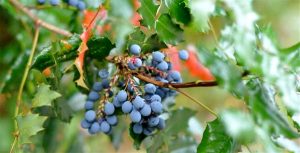
11. Oregon Grape
How to use: The roots, leaves and berries are used. It can be used to make teas, capsules, tinctures and liquid extracts.
Uses: It detoxifies the liver, is anti-inflammatory, treat infections, stomach ulcers, digestive problems and to cleanse the bowels.
Oregon Grape tea
1 Tsp Oregon Grape Root
1 Tsp Dandelion Root
2 Cups of water
12. Pau d’ Arco Bark
How to use: Pau d’Arco is available in tea, capsule and tinctures.
Uses: Also used to treat a wide range of infections including sexually transmitted infections such as herpes, prostrate and bladder infections; respiratory infections such as common cold, flu, and H1N1 (swine) flu; parasitic infections such as ringworm and yeast infections.
Pau d’Arco tea
2 Tsp of Bark
4 Cups of Boiling Water.
Pour hot water in cup with herb, cover and let sit for 20 minutes. Strain and drink throughout the day.
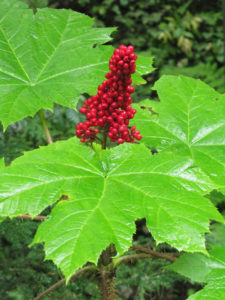
13. Devil’s Club
How to use: The parts of Devil’s Club used include root, bark, berries. It is used to make tea, capsules, tinctures and extracts.
Uses: Also used as a pancreatic tonic, for type 2 diabetes, autoimmune conditions, eczema, rheumatoid arthritis and infections.
14. Cleavers
How to use: Use in teas or tinctures.
Uses: Applied to wounds or cuts, calm burn injuries, sunburns and inflammatory skin conditions such as eczema and acne.
Cleavers tea
2 – 3 Tsp Cleavers Herb
1 Cup Hot Water
Steep herb in hot water for 10 to 15 minutes. Drink at least 3 cups for the day.
15. Chaney Root
How to use: Chaney Root is used either as a herbal tea or as an integral ingredient for tonic drinks. The root is usually soaked overnight, then boiled for 15 to 20 minutes and strain before drinking. It is often combined with sarsaparilla to make a tonic.
Uses: Used for anaemia, fatigue, analgesic, arthritis, treating skin conditions and as an aphrodisiac.
16. Stinging Nettles
How to use: Stinging nettles are used to make teas, tinctures, tonics, capsules and extracts.
Uses: Nettles are also used for hayfever, BPH, urinary infections, arthritis, diabetes, joint pains and skin conditions such as psoraris, eczema and acne.
DISCLAIMER: THIS WEBSITE DOES NOT PROVIDE MEDICAL ADVICE
The information, including but not limited to, text, graphics, images and other material contained on this website are for informational purposes only. The purpose of this website is to promote broad consumer understanding and knowledge of various health topics. It is not intended to be a substitute for professional medical advice, diagnosis or treatment. Always seek the advice of your physician or other qualified health care provider with any questions you may have regarding a medical condition or treatment and before undertaking a new health care regimen, and never disregard professional medical advice or delay in seeking it because of something you have read on this website.